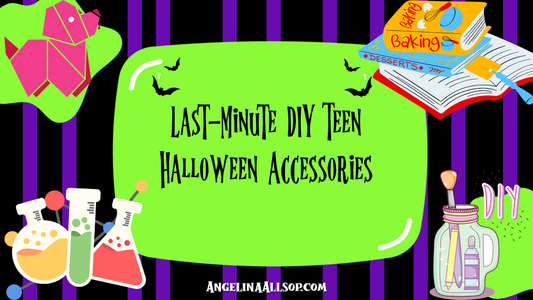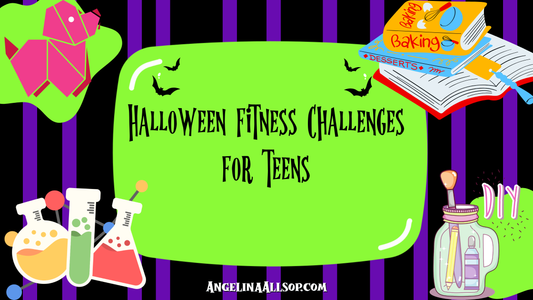As an affiliate, I earn from qualifying purchases, but this doesn't affect the reviews or recommendations—your trust is important to me!
Baking Soda Rockets Experiment: Exciting Science for Kids

Today, We're Making:
- - Baking Soda Rockets
- - 'Baking Soda Rocket Races': Families can use the same amount of baking soda and vinegar but create different designs for their rockets. They can then hold races to see whose rocket goes the highest or farthest, teaching principles of aerodynamics, propulsion and design aesthetics.
- - 'Controlled Explosion Experiment': Kids can make rockets with different concentrations of baking soda and vinegar to see how the change in proportions affects the height and speed of the rocket launch. The experiment demonstrates the concept of chemical reactions, ratios and measurements.
- - 'Colorful Chemical Reactions': Add food coloring to the vinegar before the launch. When the rocket shoots off, it will create a colorful explosion.
Did you know with just a handful of household ingredients, your kitchen can transform into a mini NASA launchpad?
That's right – we're talking about Baking Soda Rockets, an experiment that's not only an exciting science for kids but also a delightful walk through rocket science and chemical reactions.
So, are you intrigued to discover how everyone's favorite pantry staple, baking soda can power up a homemade rocket?
Or perhaps you're looking for easy DIY experiments that make learning through experiments interactive and fun? Either way, strap in as we are about to ignite your child's STEM curiosity, and who knows, inspire the next Sally Ride or Neil Armstrong in your home laboratory!
After the Giggles: The Science Behind Baking Soda Rockets
After the giggles and 'ooohs' die down from the surprise of seeing homemade rockets whiz around your living area, it would be the perfect time to explain the science behind Baking Soda Rockets. This experiment serves as an excellent foundation for teaching kids about chemical reactions, particularly the reaction between baking soda and vinegar. The immediate bubbling and fizzing that occurs when these two ingredients are combined is a result of a chemical reaction that produces carbon dioxide gas. This rapid gas production is the driving force behind your rocket. Not only is this a thrilling spectacle for young minds, but it's also an excellent way to instil in them the fundamentals of science in a fun and interactive way.
Baking Soda Rockets: A STEM Delight
Baking Soda Rockets are perhaps one of the most engaging STEM activities for kids. Think about it: they combine multiple facets of STEM – the science and the chemistry of the baking soda and vinegar reaction (remember, we said gas!) , the physics of rocket propulsion, and even touches of engineering as your little ones build their rockets. These DIY science projects for kids promote experimental learning, essentially helping children understand complex concepts by allowing them to observe and deduce the outcomes through direct, hands-on applications.
More Than Just a Science Experiment
In addition to being a thrilling science experiment at home, these DIY rockets contribute to boosting the imaginative power, critical thinking, and problem-solving skills of your child. While they're absorbed in the thrill of making rockets at home and the excitement of watching them launch, they might not even realize that they are effectively doing a physics for kids project. It’s profoundly gratifying as a parent to see your children engaged in activities that ignite their love for learning, particularly in science, technology, engineering, and mathematics fields.
Baking Soda: It's Not Just for Cookies Anymore!
When people speak about baking soda uses, rockets are possibly the last things on their minds. But, as you’ve probably discovered, there's so much more to this common pantry item than just making cookies rise. The fascinating baking soda projects in your kitchen-turned-home laboratory can be a delightful inspiration to your tiny astronauts-to-be, showing them that the world of science extends far beyond the confines of school textbooks. With these safe science experiments for kids, you can foster a lifelong love for scientific discovery. Your little explorer might be launching baking soda and vinegar rockets today, but who's to say they won't be real rockets in the future?

STEM Journey: Baking Soda Rocket Experiment for Young Astronauts
So as we conclude this thrilling, educational space journey inside the comfort of your home, remember this: while the rockets may not reach the moon, you have sparked a marvelous curiosity in the fantastic world of STEM for your young astronaut.
A baking soda rocket experiment not only provides a fun-filled afternoon, but it also lays the stepping stones for a lifetime of scientific exploration and discovery. It’s not just about having fun with cool science experiments; it's about inspiring our future scientists, inventors, and explorers. Indeed, the sky is not the limit when your kitchen can turn into NASA's launchpad.
Happy launching, and remember, every great journey starts with a small step, or should we say, a pinch of baking soda!

You May Also Like These:
```html
Baking Soda Rocket Races
Bring out the creative genius in your child with this fun and exciting STEM experiment! Each family member can use the same amount of vinegar and baking soda to create differently designed rockets. The game is to see whose rocket goes the highest or farthest! Let's rocket into some fun learning!
Ingredients:
- Baking Soda
- Vinegar
- Water Bottle
- Cork that fits your water bottle
- Paper towels
- Pencil and paper to create your rocket design
Instructions:
- Create your Rocket Design: Use the pencil and paper to sketch out a design for your rocket. Consider going for a design that enhances speed or height!
- Ready your Rocket: Take your water bottle and wrap your designed paper around it. Secure it with tape.
- Prep the Fuel: Pour vinegar into your bottle until it is about one third full.
- Load the Baking Soda: For the best reaction, roll up a small piece of paper towel and sprinkle some baking soda on top of it, roll the baking soda tightly inside the paper towel. This will slow down the reaction so that you can get your cork in place without the mixture overflowing.
- Cork it: Quick! After dropping in the loaded baking soda, immediately cork your bottle. Make sure it is sealed tightly!
- Launch your Rocket: Flip your Rocket (bottle) upside down and stand back! The baking soda and vinegar will react causing pressure build up that sends your rocket flying into the air!
We can now have our rocket race! Whose rocket went the highest or the farthest? Remember this is a fun activity, the goal is to learn and enjoy!
```Aerodynamics for Beginners: The Paper Airplane Experiment
Objective:Your child will grasp the fundamental principles of aerodynamics by creating and experimenting with paper airplanes.
Ingredients:
- Sheets of A4/Letter size paper
- A wide, open space for flying the airplanes
- Measuring tape
- Notebook and pen for recording observations
Procedure:
- Fold a sheet of A4/letter paper in half lengthwise, then unfold it again.
- On one end of the paper, fold the corners in towards the middle to create a triangle. Repeat this on the other end. Now, you should have two triangles on each end.
- Fold down the top edges of these triangles to create a smaller triangle on each end.
- Next, fold the paper lengthwise so that the triangles are inside the fold.
- Finally, create the wings by folding down the top edge of each side. Make sure that the wings angle down slightly for better flying.
- Repeat this process to create multiple airplanes.
- Launch the paper airplane and observe how it flies through the air. Change the angle and direction of your launch to observe different flight patterns.
- Measure the distance each airplane travels and note it down.
- Experiment with different airplane designs like adjusting the size of the wings or the weight of the paper and observe how these changes influence the flight of the airplane.
- Discuss the findings with your child and explain how the concepts of lift, drag and gravity are playing a role in the flight of the airplane.
Remember that safety is important. Children should be careful not to let the paper airplanes fly into people's eyes or faces. Ensure that the chosen space for flying the airplanes is safe and devoid of hazards.
Controlled Explosion Experiment
This is a fun and engaging experiment that demonstrates the concept of chemical reactions and how changing proportions can affect the action and reaction. In this case, the height and speed of a homemade rocket will be altered by varying the amounts of baking soda and vinegar used.
Ingredients
- An empty film canister with a tight fitting lid
- Baking Soda
- Vinegar
- Measuring spoons
- Safety goggles
Instructions
- Ensure that everyone involved in the experiment is wearing safety goggles - safety is always the first priority!
- Take the film canister and fill it about 1/3 full with baking soda.
- Take the vinegar and add a few milliliters into the canister. As a starting point, fill it until it's about half full.
- Quickly snap the lid onto the canister and then immediately place the canister lid-down on a flat surface.
- Step back and watch as the chemical reaction inside the canister causes pressure to build and eventually sends the canister rocketing into the air!
- Once your rocket has landed and the reaction has completely stopped, retrieve your canister.
- Repeat the experiment, but this time alter the amounts of baking soda or vinegar. Note the changes in reaction - does the rocket go higher? Does it launch faster?
- Record your observations after each experiment round to track how different proportions of baking soda and vinegar affect the propulsion of your rocket.
Always remember:
Never aim the rocket towards yourself or anyone else and always make sure to do this experiment in a safe and open area away from obstructions.
Colorful Chemical Reactions STEM Experiment
Objective:
Teach children about ratios, measurements, and chemical reactions using a fun and engaging experiment.
Materials Needed:
- A plastic film canister with a tight-sealing lid
- Baking soda
- Vinegar
- Food coloring (optional)
- Measuring spoons
- Safety goggles (recommended)
Instructions:
Step 1: Safety First
Before you begin this experiment, make sure to put on your safety goggles. This will protect your eyes from the vinegar and the rocket's launch.
Step 2: Prepare the 'Fuel'
- First, fill the film canister one-third full of baking soda.
- If you want a colorful explosion, add a few drops of food coloring to your vinegar now.
- Pour the colored vinegar into a separate container, and set it aside.
Step 3: The Launch
- When you are ready to launch the rocket, quickly pour vinegar into the canister until it’s about half full.
- Quickly put the lid on the canister and make sure it snaps in all the way.
- Set the canister on the ground lid side down and step back.
- Within a few seconds, the film canister should launch into the air!
Experiment Explanation:
The vinegar (an acid) reacts with the baking soda (a base) to create carbon dioxide gas. The gas builds up pressure inside the canister until the lid pops off in a mini rocket launch. The quantity of baking soda and vinegar used shows the importance of ratios and measurements in science.
Create a Colorful Explosion - A STEM Experiment
Ingredients:
- 1 Small bottle of food coloring - (Any color of your preference)
- 1 Liter of White Vinegar
- 1 Pack of baking soda
- 1 Clear glass container
- Funnel (for safety and cleanliness)
- Safety Goggles
Instructions:
- Start by wearing your safety goggles. This experiment might cause some splashing and it’s always important to protect your eyes.
- Place your clear glass container on a surface that can be easily cleaned, or you might prefer a tray or outdoor environment.
- Using your funnel, carefully pour some baking soda into your glass container. Filling it about 1/3 full should be enough.
- Add about 7 drops of your chosen food coloring directly onto the baking soda. Feel free to mix colors for a more vibrant experiment.
- Ask the kids to predict what might happen when we add vinegar to this combination.
- Using your funnel again, slowly pour vinegar into the container.
- Watch as a colorful explosion occurs! The baking soda reacts with the vinegar creating a fizzy and colorful eruption. Remember, this can be messy so ensure you’re prepared for cleanup.
Enjoy your colorful explosion, and remember to stay safe as you explore the wonders of science!





































